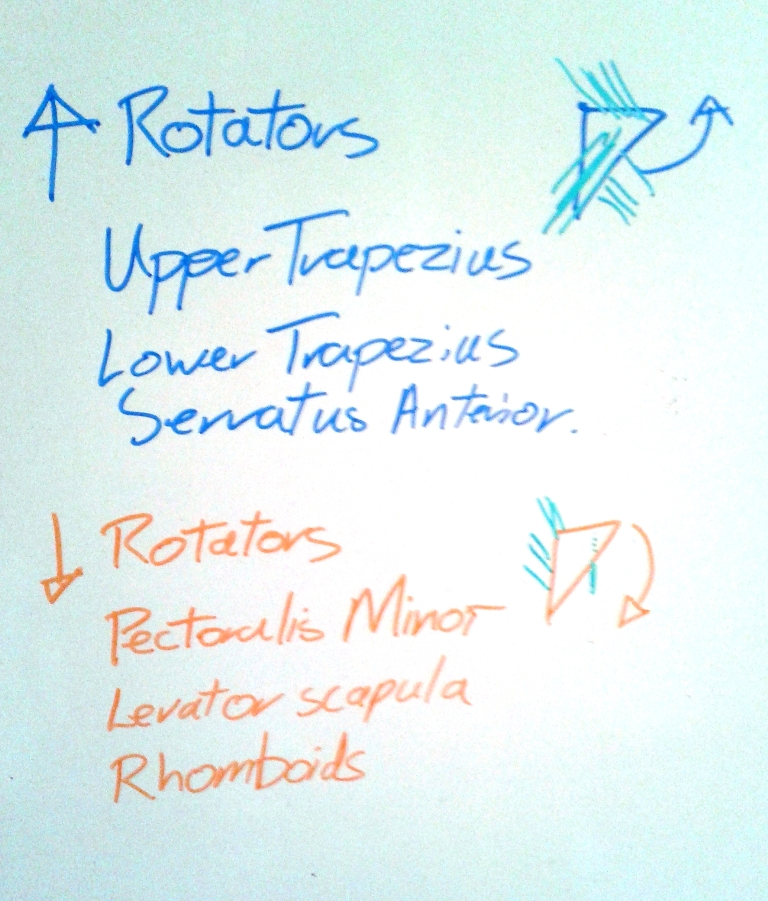Winging Scapulae are a sign that something is not quite right in the shoulder, and some muscles may either be out of synch with each other, or might not be working at all.
When you move your shoulder, theoretically the scapula – or shoulder-blade – should move up, down and around on the rib cage. It shouldn’t really come off, or splay outward, which is known as winging. We can class this suboptimal movement as either “true winging” where the entire inner edge of the shoulder-blade is prominent away from the rib cage, or “pseudo winging” where only the bottom corner of the shoulder-blade protrudes away. True winging is indicative of a less stable shoulder – and would be more prone to injury, pain and general wear and tear.
The muscles that make the shoulder-blade move are known as a force couple. This means there are two groups of muscles pulling in opposing directions in order to keep the body part in the optimal place for efficient movement. In this situation, the two groups of muscles are the Upward rotators and the Downward rotators.
Unsurprisingly the upward rotators rotate the shoulder-blade upward when you lift your arm, and the downward rotators downwardly rotate it.

Upward and Downward rotators
However, the upward rotators ALSO control the movement of the scapula when you bring the arm down in a kind of braking manoeuvre to control the overall movement. It is lack of control here that causes the scapula to wing, and the shoulder to become unstable.
If the downward rotators are short and tight, they create tension, and cause the upward rotators to over-relax, not be efficient, lose tone and strength. If this happens then winging can occur. Potential reasons for downward rotators to become short, tight and over-dominant are sitting hunched over for long periods, using apparatus which encourages a caved in chest and forward leaning shoulders, general “bad” posture, and, potentially, overuse of the shoulder, causing good alignment and muscular control to become fatigued – and then carrying on with fatigued shoulders, creating new, inefficient movement patterns to become ingrained.
If you have shoulder pain, a therapist will often check to see if you have a winging scapula, because it is a good clue to what might be going wrong. However, if you have shoulder pain, but don’t have a winging scapula, there is likely to be something else that has gone awry. If your therapist isn’t sure what is going on, find someone who does.

A well-developed Serratus Anterior – an upward rotator, being used for upward rotation.




